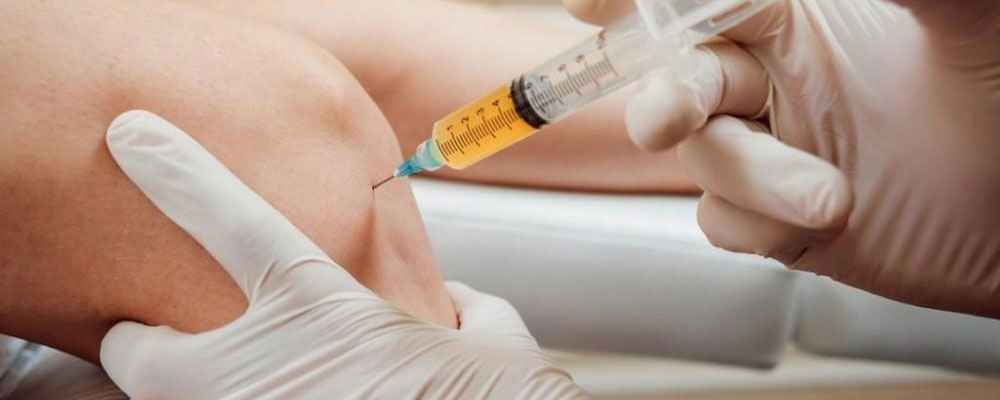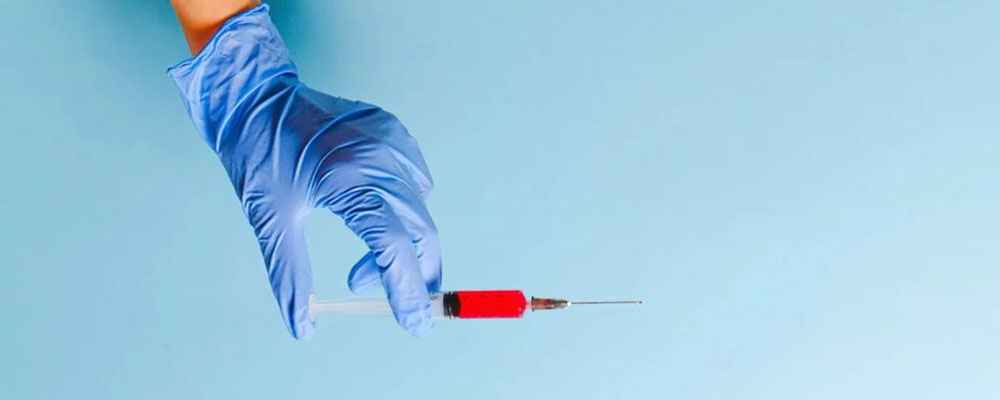Low back pain is one of the leading causes of physical impairment in both older and younger people, it can have significant financial and health consequences. Age-related intervertebral disc degeneration, which affects the nerve system surrounding the disc, is one of the leading causes of low back pain. Pain is caused by the stimulation of nociceptors in the annulus fibrosus, which is referred to as "discogenic" pain. Degeneration, endplate damage, and inflammation, for example, can trigger pain receptors inside the disc while keeping the exterior disc intact. Intervertebral disc degeneration is a dynamic process that involves changes in tissue and the cellular milieu, eventually leading to structural breakdown and impairment of intervertebral disc function.
Autologous blood having platelet concentrations above the physiological baseline is referred to as PRP. It is acquired using a centrifugation procedure that separates the blood's liquid and solid components. PRP injections have attracted substantial interest as a therapy approach for musculoskeletal disorders in recent years due to their safety and promising nature of accelerating soft tissue recovery. Percutaneous PRP injections promote tissue regeneration in musculoskeletal disorders. PRP has been used successfully to treat rotator cuff tears, knee osteoarthritis, ulnar collateral ligament tears, lateral epicondylitis, hamstring injuries, and Achilles tendinopathy.

Because platelet-rich plasma is derived from the patient's own blood, the therapy does not include any extra drugs that may interfere with hormones or other bodily systems.
The PRP technique takes around 30 minutes and begins with the extracting part of the patient's blood before isolating platelets carrying healing proteins using a centrifuge. The innovative technology at Yashoda Hospitals allows physicians to tailor therapy to each patient's specific needs, altering blood volume, cell content, and platelet concentration as needed. Platelets are then injected into the afflicted spine region.
"PRP stimulates anti-inflammatory and growth factors, which may aid in reducing inflammation inside joints and perhaps healing or regenerate tissue," Dr. Ravi Suman said.
He points out that PRP is sometimes mistaken for stem cell therapy, although the two therapies are not the same. Stem cell treatment is not currently suggested since there is little evidence that it helps, according to him. Dr. Ravi Suman says that there aren't many drawbacks to PRP.
Every therapy has some risk, although the dangers are rather low, as shown with other injections.

According to Dr. Ravi Suman, many other medical facilities do not provide the treatment, particularly for people suffering from back discomfort. Patients suffering from back discomfort might benefit from interdisciplinary assessments at Yashoda Hospitals. This is critical since many individuals suffering from back pain are misdiagnosed.
We want to be sure we're focusing on the right cause of discomfort, he says. SI joint discomfort is a common source of back pain that is sometimes misdiagnosed as something else, such as a pinched nerve or sciatic nerve pain. We primarily use PRP for these patients, as well as those who have undergone prior back surgery or spinal fusion.
PRP therapy can provide pain relief for six months to a year, and potentially longer. According to Dr. Ravi Suman, he has observed several patients who have found pain alleviation for more than two years.
Patients frequently get short-term relief with steroid injections in the SI joint or other joints in the spine, but they don't get long-term pain reduction, he adds. Many people are seeking a therapy that would provide long-term pain alleviation as well as better function in everyday activities.
PRP treatment is effective for people of all ages. According to Dr. Ravi Suman, patients must forgo anticoagulant medication, including aspirin, for a brief period before and after treatment. Patients with active cancer, infections, or blood disorders are unlikely to be suitable candidates for PRP, he says.
PRP is a safe, effective, and practical therapeutic technique that is emerging as a potent therapy for the treatment of discogenic back pain. Given the impressive progress that has already been accomplished, as well as various potential elements that need to be investigated further, PRP therapy clearly provides new and exciting opportunities for the treatment of degenerative disc disease and other musculoskeletal illnesses.
It may take four to six weeks for the PRP injections to work. The PRP injections work for a further six to nine months.
Generally, PRP injections are painless treatment option, but patients can experience varying levels of discomfort based on extent, type and location of injection.
Generally, the PRP injection is sufficient to provide relief from the condition. However, sometimes multiple injections may be required to treat the condition. If multiple injections have been prescribed, they should be taken over a gap of four to six weeks.
PRP injections are not covered under insurance.